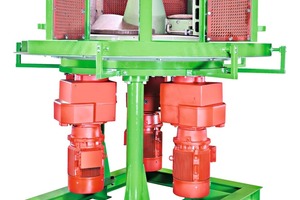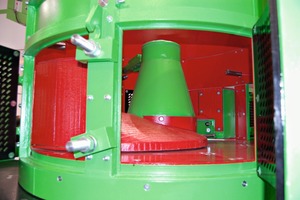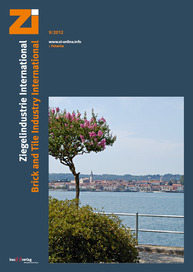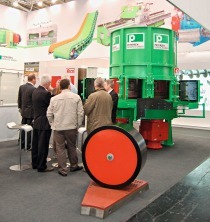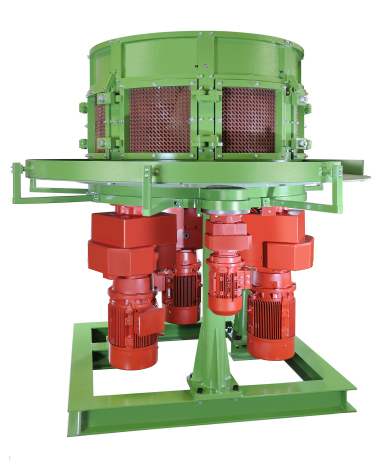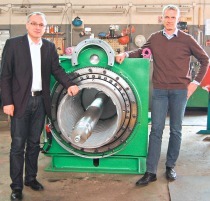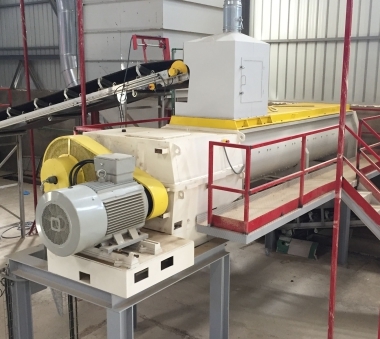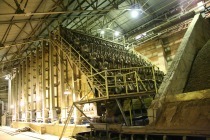New circular screen feeders facilitate servicing
One innovative leap are the new exchangeable wear plates for the striking arm. Previously, the striking arm had to be hard-faced and often the arm became warped from the welding process and rework was necessary. “With the new circular screen feeder this is no longer necessary”, explained Thomas Kloft, Petersen Plant Manager and developer of the machine. The wear elements protect the actual striking arm from warping so that welding is not necessary. These metal plates can be easily replaced.
Shorter assembly times
Less wear and corrosion
The mixing arm is connected to the drive unit via a cog-set. “However, the screw heads do not come into contact with the material so there is no corrosion damage”, as Thomas Kloft explained. The output is carried out with a two-tier expunction arm via a screen basket with a straight dished head, for which there are eight interchangeable sieve sheets with swing-out doors. This way the sieves can be easily changed from outside, without any need to actually go into the machine. The bottom plates are fixed to the machine frame with through bolts, which means that these can be easily replaced even after a longer operation time. All the connecting nuts can be accessed from below. In the upper sector there is a striking arm that prevents adhesion and bridging above the counter knives. The circular screen feeder is able to moisten the ceramic centrally from below around the mixing and discharge arm. This steam is effected via a nozzle tube behind the mixing arm. The collection plate is driven by a three-phase gear motor with a performance of 5.5 kW, which is steered by a soft starter to avoid switch surges during the start-up. The storage capacity can be increased to up to nine cubic metres via a separate construction vat.

